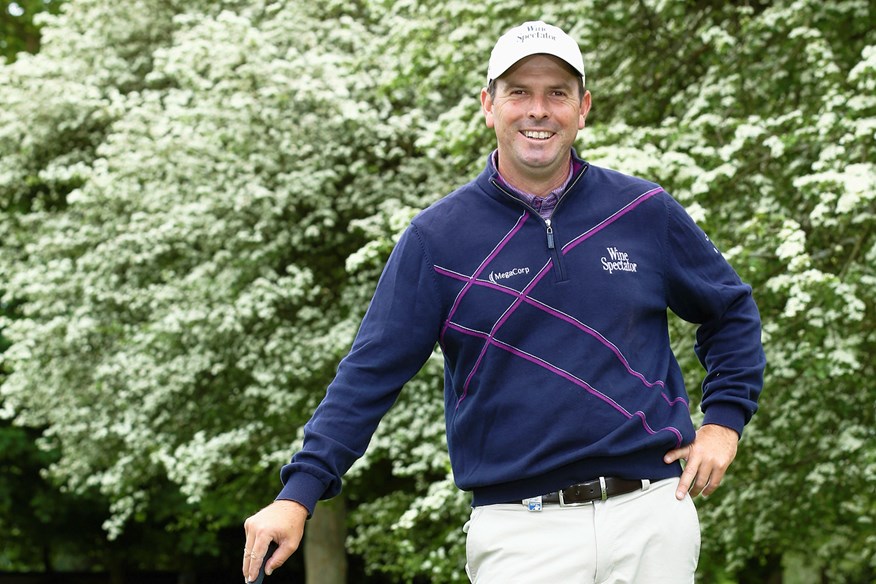9 ways to make sure you hit the fairway
Last updated:
One of the PGA Tour’s most accurate drivers shares his advice to help you hit the short grass more often off the tee.
South African Thomas Aiken is one of the most accurate drivers in the game. So far this year he’s hit more than 72% of his fairways on the PGA Tour, putting him second in the accuracy stats.
Here he shares how he does it.
1. I’ve always done a drill that works on rhythm – I will take a driver and try to pitch the ball starting at 120 yards, with a full swing. Five balls, and hit them straight. Then increase the distance to 170 and then 220 and then 270 and then flat out at 300. This drill makes sure your whole body is working in unison. It is very difficult to release the ball straight when you hit it slowly, but take a full swing.
TOP STORIES
Choose the best golf ball for your game
When should you replace irons with hybrids?
Our biggest ever equipment trial
2. I play 99% of the time with left-to-right ball flight. I tee the ball up on the right, making full use of the width of the fairway, aiming down the left and trying to cut it back into the middle. It makes your fairway that much wider. I see an awful lot of amateurs in pro-ams teeing the ball up in the middle of the tee box – you have halved your fairway width already. You are hoping it is either going to go straight or a small draw or a slight fade. Whatever your natural shot shape is, plan for that from the tee.
3. I look at a finishing target. Then that is the only thing I concentrate on. Because we hit so many balls, I know where to start the ball according to where I want it to finish. You shouldn’t overcomplicate things – just look where you want the ball to finish and let your natural instincts take over.
4. It takes a while to find a “good” driver. I always say that a driver and a putter are the two most personal clubs in the bag. You can get the same driver, same brand, same loft, same shaft and each driver can react differently. They are not hand made anymore – all are machine made and there are slight discrepancies as to where the club is welded, where the weld seam is, and that changes the dynamic of each individual club. So the best thing you can do is go to the local pro shop that allows you to try clubs from a fitting point of view and when you find a club that you like, try four or five of them and you will find one of those that you like most.
5. Know when not to hit driver! It all depends on the hole. You might have
a wider landing area with a driver or perhaps with a 2-iron or a 3-wood. If the hole is long, you might need to hit driver – or sometimes you don’t. It can also depend on what the greens are like – if it is soft and the pin is at the back, you may want to lay up with a 3-wood or a 2-iron to give yourself a slightly longer club to stop the ball spinning. But you might want to hit driver into a front flag to give yourself a shorter shot to spin the ball back from the middle of the green.
6. Golf is a chess game – you are always planning for the next shot. That’s why you will see a lot of guys, when they are laying up on par 5s, taking longer than they would normally do as they are trying to lay up to an exact yardage to leave themselves the perfect distance for their third.
7. Visualisation is a big part of hitting fairways. I have been playing golf since I was four, so I grew up with a lot of balls and persimmon woods and balls that moved a lot more – you really become a feel type of player where you are visualising the shape of your shot, and the trajectory. We used to play around as kids, when you missed the fairway, trying to hit it underneath the first tree and over the next one and really playing with the ball flight. So when I stand behind the ball, I’m picturing ball flight all the way down to the ground.
8. Tee height all depends on the type of shot you want to play. If I have a downwind shot on a par 5, that I really need a killer drive to reach the hole in two, I will tee the ball up a lot higher and try to hit “up” on the ball more. So I get more launch and less spin, so the ball can carry a bit more. Vice versa, if it is into the wind, I tee the ball a lot lower down, move it back in my stance and try to squeeze the ball out and keep it low. I will actually go down on the shaft three or four inches to help that ball flight come out lower.
9. Get on a launch monitor so you can see what angle of attack you are hitting the golf ball at. When it comes to testing drivers, it can be helpful when you are looking at stuff like spin rate and launch angle.

